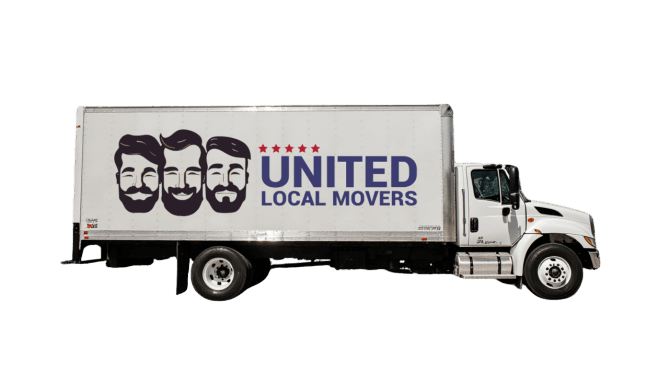When hiring a moving company, one of the first questions to ask is how your estimate is structured. The difference between binding and non-binding estimates can drastically affect your final bill — and your peace of mind. Many customers agree to a quote without realizing which type it is, only to face unexpected charges on moving day. This guide explains how both types work, how to protect yourself, and what reputable movers do differently.
Why Understanding Moving Estimates Matters
A moving estimate isn’t just a number — it’s the foundation of your entire relocation agreement. Whether your move is local or interstate, the way a company builds your quote determines what you’ll pay in the end. Binding and non-binding estimates represent two very different pricing models, and knowing which one you’re signing can save you from unnecessary stress and financial surprises.
FMCSA regulations require all interstate moving companies to provide a written estimate that clearly states which type it is. However, not all companies follow this rule consistently, so it’s essential to verify before signing anything.
What Is a Binding Estimate?
A binding estimate means the moving company guarantees the total cost of your move based on the services and inventory listed in the written estimate. Once you and the mover agree on this amount, it doesn’t change — even if the actual weight or time turns out slightly different, as long as your inventory and service requirements remain the same.
Here’s what makes a binding estimate reliable:
- The mover performs an in-home or virtual survey to assess your belongings.
- All services — packing, stairs, long carry, etc. — are included in the written agreement.
- The quote becomes a fixed price that cannot legally increase without your consent.
This model gives customers peace of mind because they know the total cost upfront. It’s especially beneficial for long-distance or corporate relocations where accuracy and predictability are crucial.
When a Binding Estimate Can Change
While the word “binding” sounds absolute, there are limited scenarios where your cost may still increase:
- Additional items: If you add furniture or boxes not included in the original inventory.
- Extra services: Packing, stairs, or storage that weren’t discussed earlier.
- Access issues: Unexpected long carries, narrow streets, or shuttle requirements at delivery.
Reputable movers will issue a written addendum called a “revised written estimate” to document these changes before performing the work.
What Is a Non-Binding Estimate?
A non-binding estimate is an educated guess of what your move might cost, based on the mover’s experience and the details you provide. The final price can go up or down depending on the actual weight of your shipment and services rendered. This type of estimate gives flexibility but comes with more financial uncertainty.
According to FMCSA guidelines, a moving company may only charge you for the actual weight and services performed — but since you don’t know the final cost until after delivery, surprises are more likely.
Typical Scenarios Where Non-Binding Estimates Are Used
Non-binding estimates are more common for smaller moves or when the customer prefers to give an inventory list online without a full survey. They can also be used when time is short, and both parties agree to a “rough” estimate based on average weights.
Here’s when this type of quote might make sense:
- You’re flexible with budget and timing.
- The move is short-distance and easy to measure.
- You trust the company’s transparency and reputation.
However, with less accountability, it’s essential to ensure you’re dealing with a licensed mover who follows FMCSA regulations.
Comparing Binding vs Non-Binding Estimates
The table below outlines the main differences between these two types of moving quotes:
| Feature | Binding Estimate | Non-Binding Estimate |
|---|---|---|
| Price certainty | Guaranteed fixed amount | Can increase or decrease |
| Based on | Exact inventory and services listed | Approximate weight or volume |
| Best for | Interstate or complex moves | Small, flexible local moves |
| Risk of hidden costs | Low (if no changes) | Higher (depends on actual weight) |
| Legal protection | Covered by FMCSA contract law | Limited to “reasonable” accuracy |
As a general rule, if your move involves a large home, cross-state logistics, or strict delivery timelines, a binding estimate offers the safest choice.
Understanding “Not-to-Exceed” or “Binding-Not-to-Exceed” Estimates
There’s a third, hybrid option that combines the best of both worlds: the binding-not-to-exceed estimate. In this model, the mover gives you a guaranteed maximum price, but the final cost can be lower if the shipment weighs less than expected.
This protects customers from paying more than agreed while rewarding efficiency. Many reputable companies — including United Local Movers — prefer this model because it builds trust and transparency.
Common Misunderstandings About Moving Quotes
Customers often misunderstand how estimates work, especially when comparing multiple companies. Here are a few misconceptions to watch for:
- “All movers charge the same way.” — Wrong. Some quote by cubic feet, others by weight or time. Always clarify.
- “My quote includes everything.” — Ask for a breakdown of all accessorial fees like stairs, long carry, or fuel.
- “I can rely on verbal agreements.” — Never rely on spoken promises. Always get the final quote in writing.
Understanding your estimate type helps you compare “apples to apples” and identify when one quote looks unrealistically low.
Legal Protections Under FMCSA Regulations
The Federal Motor Carrier Safety Administration requires all licensed interstate movers to follow specific estimate and billing standards:
- Provide written estimates (binding or non-binding) before loading begins.
- Clearly label the type of estimate on the top of the form.
- Deliver a signed copy of the contract to the customer.
- Allow customers to review weight tickets upon request.
Violating these requirements can lead to penalties and license suspension, so any mover unwilling to follow these rules should be avoided.
How to Protect Yourself Before and During the Move
Here’s a checklist to ensure your moving estimate is accurate and fair:
- Request a written, itemized estimate with the correct type (binding or non-binding).
- Confirm all services (packing, storage, stairs, fuel) are included.
- Check the mover’s USDOT and MC numbers on the FMCSA website.
- Ask what happens if you add or remove items before moving day.
- Keep a copy of every signed document for your records.
Doing your homework up front helps ensure there are no unpleasant surprises later.
Making the Right Choice for Your Move
The best type of estimate depends on your priorities. If predictability and peace of mind matter most, go with a binding or binding-not-to-exceed estimate. If you’re on a tight budget and can handle small fluctuations, a non-binding estimate might work — but only with a mover you fully trust.
With United Local Movers, your relocation becomes safer, faster, and stress-free. Our team provides clear, written binding estimates with no hidden charges, giving you full confidence that what you sign is what you pay.





